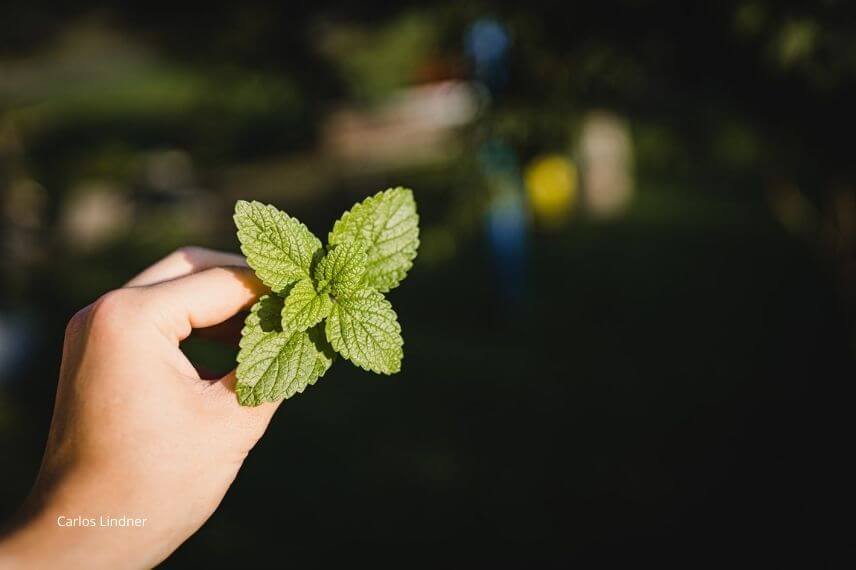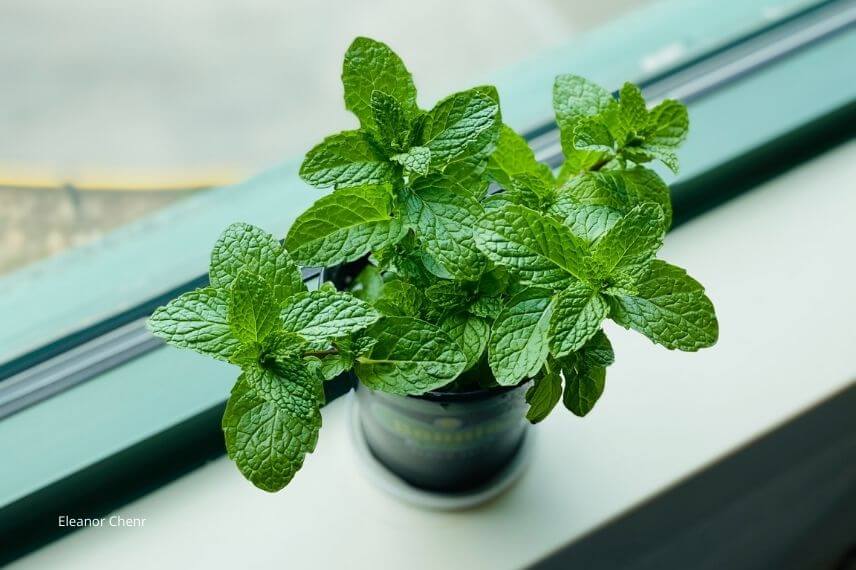Mint is an aromatic perennial plant with highly fragrant and edible foliage, well-known among gardeners. It is very easy to cultivate, whether in pots or in the ground, in the garden or vegetable patch.
This plant is easily propagated by cuttings by taking stems directly from the chosen variety. We will explore two simple methods to propagate mint: water propagation or the covered cutting method.
What is a mint cutting?
To obtain a new plant, it is not essential to sow seeds or buy an existing young plant. Propagation by cuttings is an excellent way to get a new plant. It is a simple and economical method of reproduction!
Propagating allows you to multiply a plant, obtaining a new individual by taking a part of the mother plant (i.e., a mature plant). Taking a mint cutting allows you to have a new plant with the same genetic characteristics (variety, taste, smell, resistance...).
How to propagate mint in water or using the covered method
We will detail two ways to successfully propagate mint: water propagation and the covered cutting method.
Preparing mint stems for propagation
To take mint stems for propagation, you will need scissors, a knife, or secateurs. The blades must be sharp and previously disinfected with 70°C alcohol to avoid any risk of transmitting diseases or fungi to the fragile future cuttings.

Use a clean and sharp tool to cut a mint stem for propagation
- Select young shoots from the mother plant that have not yet flowered, about 10 cm long. They will be of better quality for propagation and more likely to develop roots. Cut the selected stems below the node, i.e., the point where a leaf intersects.
- Prepare the cuttings: this step involves removing the leaves from the lower half of the stem by hand, being careful not to damage the bark. This prevents the leaves from being submerged in water or buried in the pot during propagation, which could lead to rot and diseases.
- Cut the remaining leaves in half to prevent rapid drying of the cuttings through evapotranspiration and to help the plant focus on producing new roots.

Select a young mint stem
Steps for propagating mint in water
Propagating mint in water is the simplest and quickest method. It requires minimal equipment: a glass, water, and patience are enough!
- Place the harvested mint stems in a glass of water, ideally rainwater. The remaining leaves on the stem should not touch the water.
- Change the water every 2 to 3 days to keep it clear and clean, preventing the growth of bacteria.
The propagated mint stems will gradually develop their first roots in water, usually within 4 to 6 weeks.
The covered method for propagating mint
To propagate mint in a pot using the covered method (to maintain a humid atmosphere around the cutting), the necessary tools are:
- perforated buckets or pots
- a pencil (or stick)
- a cloche (a transparent plastic bag like a freezer bag or an upside-down plastic bottle with the top cut off will work)
- compost, ideally seed-specific
Steps to successfully propagate mint in a bucket.
- Fill the pots with compost and moisten the substrate.
- Place a mint stem in each pot, first making a hole with the pencil to avoid breaking the fragile stems.
- Firm the soil around the stem with your fingers.
- Cover the pots with the cloche to retain moisture until roots develop.
- Place the pots in the shade, ideally at a temperature of 20 to 25°C, under a cold frame, greenhouse, or conservatory if possible.
- Ventilate occasionally to circulate air and prevent mould growth.
You can use plant hormone powder before placing your stems in the buckets: simply dip the stems in a little powder, then tap to remove the excess. This step promotes the appearance of rootlets (small roots), but is not essential for successful mint propagation.
The mint roots will develop within 4 to 6 weeks on average.
When to propagate mint?
Mint propagation is best done in spring, in May or June.
At this time, the mint has not yet flowered, and it is easier to find young branches.
It is also possible to propagate mint in late summer, in August or September.
What to do after propagating mint?
The cuttings should spend their first winter sheltered (under a cold frame, in a greenhouse, or conservatory) before being transplanted into the ground. You can plant them in the garden from the following spring, when the soil has warmed (around 10°C) and there is no more risk of frost.
Good to know: mint grows quite quickly and can even become invasive! If you want to plant your new young plants in the ground, choose the planting location carefully. The ideal is an isolated corner of the garden, a dedicated bed, or using a buried pot.
You can also choose to keep mint plants in pots (repot when the plant seems cramped, for example, if its roots are coming out of the pot's drainage holes). Remember to water regularly, without leaving stagnant water in the saucer, which could rot the roots (empty it after 15 minutes).
If your mint stem turns black, the cause is likely overwatering.

Mint can easily be grown in pots
Mint varieties to propagate
All mint varieties can be propagated: spearmint, Moroccan mint, peppermint, bergamot mint, round mint...
They all have their own characteristics and, above all, their own taste and smell. So don’t hesitate to experiment and propagate several varieties!
To go further
- Everything you need to know about growing mint
- All our tips for successfully growing mint in pots or containers
- Our advice sheet: Essential mint varieties
- Discover other easy-to-propagate perennial plants
































Comments